Becoming a Cowboy on a Guyanese Ranch
Did you know that ranching is a big part of daily life in some parts of Guyana? We certainly didn’t but it turns out that there are huge plots of land around Guyana where you will find ranches.
After two nights out in the bush, we headed along to Saddle Mountain Ranch to learn all about the culture and the way of life there. The ranch is owned by Tommy and his wife Joan. Tommy is a fascinating person, his father was British and mother Guyanese. To me he sounds like a farmer from the west coast of Ireland. When he speaks, he uses ‘boss’ at the end of his sentences.
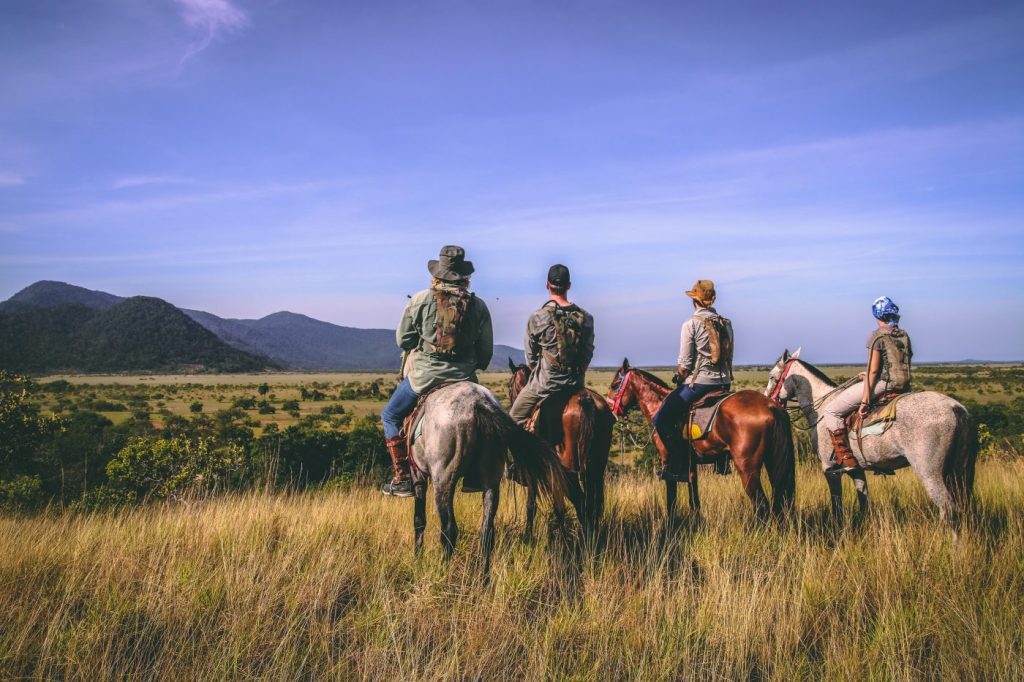
He used to work on boats, exporting Guinness in the Caribbean but has since settled down on the ranch.
The ranch is situated right beside the Brazilian border and from what I gather, Tommy bought the ranch off a much larger company which was selling off pieces of land beside the border to help protect against loss of livestock to thieving Brazilians.
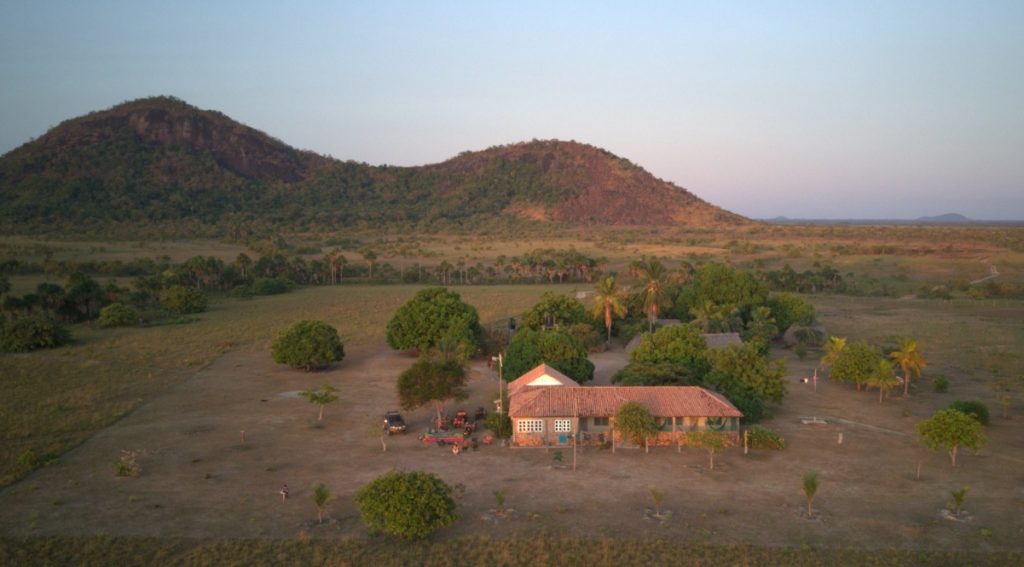
We got to the ranch and had a bit of a siesta before gearing up and heading out for a ride on our horses. I’m not exactly mad into horses, I could never quite grasp trotting and the last time I went horse-riding, a horse bucked my cousin off it and then stamped on her wrist…. So I was a bit apprehensive to say the least!
We got all our gear and headed over to see the horses and I was paired with this beautiful horse called ‘Bolt’. Oh feck, they don’t call a slow horse Bolt!
We went out for a ride just before sunset and Bolt was a legend, he didn’t rush and was extremely responsive to my controls. Horse riding is very different down here than what I was used to in Ireland.
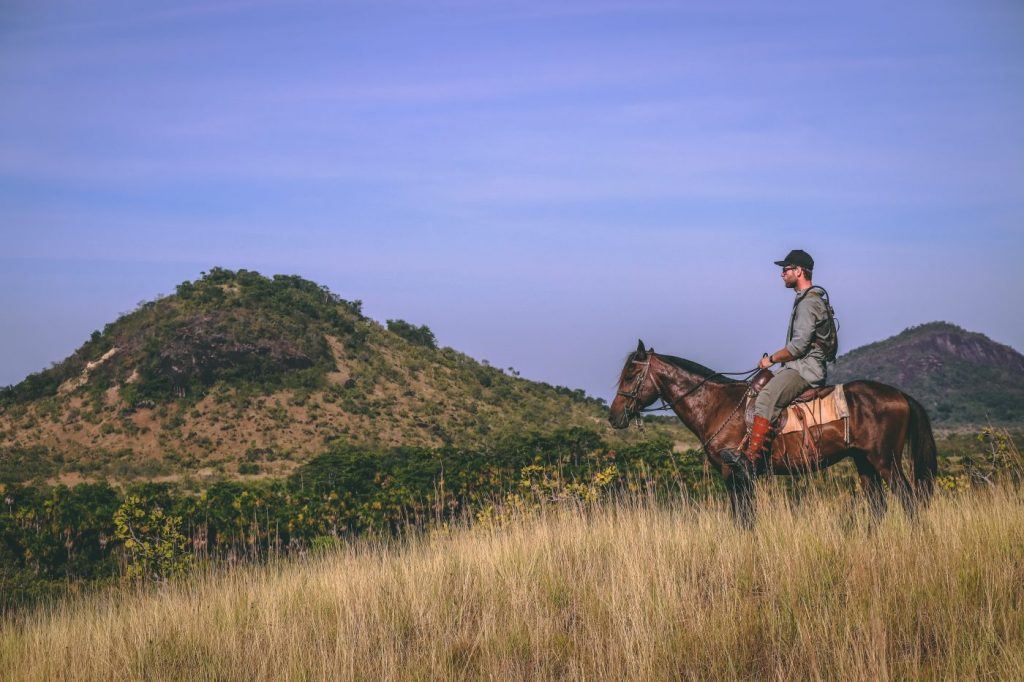
How is horse riding different in Guyana?
Well, for starters the reins are designed to be held with only one hand. The other one should be free or holding onto a lasso. As well as that you don’t exactly pull the reins to move. You simply gently turn them in the direction you want to go. The horse feels it around their neck and turns in an instant, it’s a lot more responsive than what I was expecting.
Now, we didn’t do it but they also used to ride the horses barefoot, hooking their toes into the stirrups to allow for better control. Considering I could just about stay up on the horse, I didn’t fancy trying the toe thing!
After the ride we sat down and had some rum with Tommy where he told us his gripes. The iguanas are eating his limes, the parrots eat 90% of the mangos on his tree, keeping his guns clean (thankfully he had his fishing and hunting discount codes discount codes) but worst of all, some of his 500 cattle are disappearing and he doesn’t know why.
He thinks it is either a Jaguar hunting them or they are being stolen by opportunists. Tommy has 50 square miles of savannah to look after, so it’s hard to keep an eye on all the cattle at once. He also went on to say that his wife, Joan has had to scare away jaguars on multiple occasions with a machete. As the jaguars get older they can’t hunt as well as they used to so they head closer to populated areas to hunt for domesticated animals. The savannah is surrounded but small mountains which are covered by thick forest and that is where most of the wildlife resides including sloths, jaguars, wild boars, howler monkeys and hundreds more!
Ian was telling us that in the old days the documentary crews would come out to Guyana and try to get some footage of the jaguar. They used the jaguar’s favourite bait to attract it, dog. They would tie a dog to a stick and then lie in wait until the jaguar came.
Lionel was telling me about a person he knew who was hunting a jaguar. The jaguar had become a threat to the people in the town and needed to be killed but the person made one very dangerous mistake, never pursue an injured jaguar. He had shot an arrow through the jaguar, injuring it and then he and his two dogs chased it into the jungle. Jaguars are not known for attack humans but any animal will defend itself when cornered. The jaguar lunged at the man, killing each dog with a swipe of its paws. It then took a chunk of meat out of the leg of the man before running off.
Despite all these stories Tommy was adamant that the jungle is one of the safest places in the world and ‘you could sleep on the ground and be alright’. I guess maybe we’ve been a bit brainwashed with all the overly exaggerated stuff we see on the telly! Sure, look at how the Discovery channel gave sharks such a bad reputation.
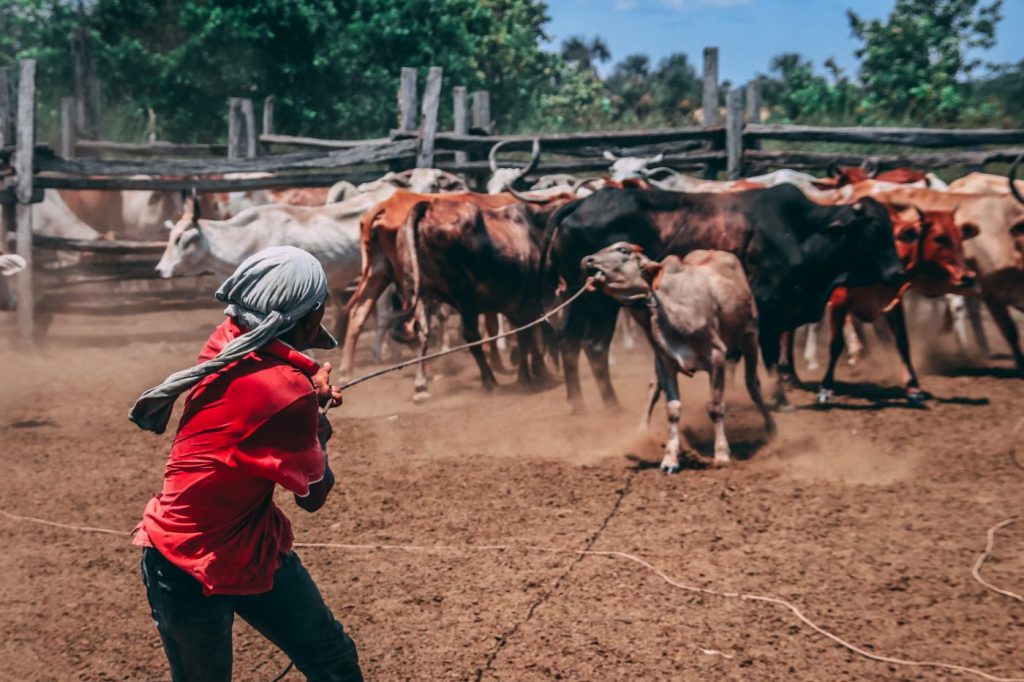
On our second day on the ranch we ventured into the corral where some cows needed to be branded and others needed castrating. This was heavy work under the heat of the midday sun and it was tough going. I tried my hand at lassoing a couple of cattle but unfortunately didn’t catch any. I did help out holding onto the cows during the branding process but I think a lot of us were kind of uncomfortable during the whole thing. These are necessary things to be done on the ranch and a part of daily life but just something we aren’t really used to seeing.
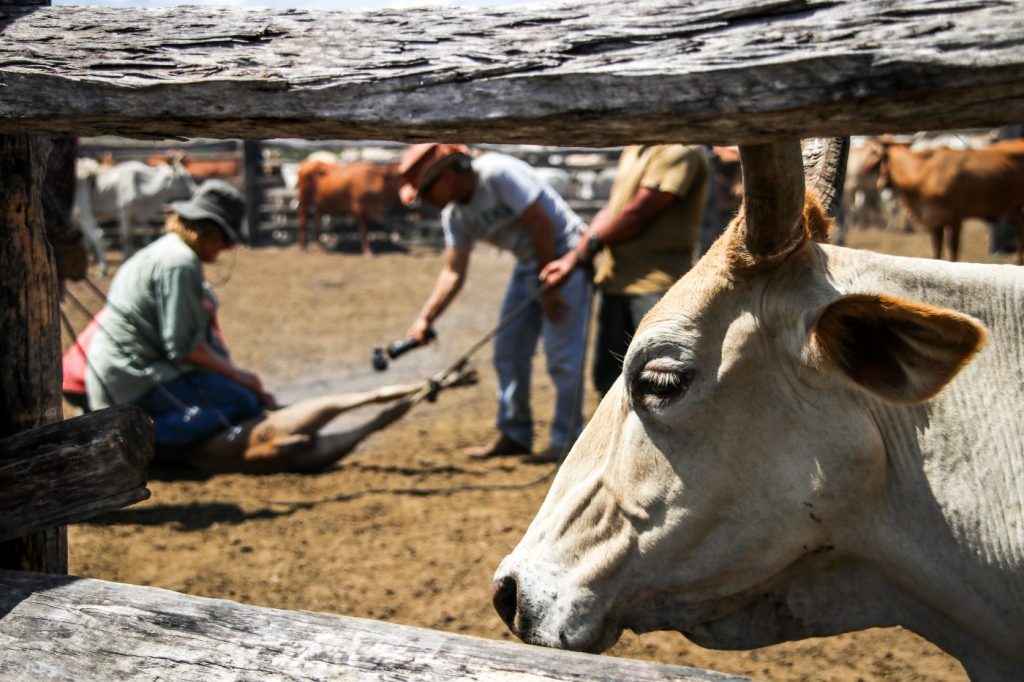
After the branding the cows were released and let off to roam but they were heading in the wrong direction. Usually Tommy would hop on a horse and go direct them but this time we tried something different. Jules sent his drone over in an attempt to herd them in the right direction and it worked! One loud buzzing drone made about 100 cows change direction and head off toward Saddle Mountain. How cool is that?!
After that we headed out for another evening horse ride where I figured out that going faster was easier than going slower so Bolt and I got a bit more used to each other. I’d say one of my favourite feelings during this trip was when Bolt transitioned from trotting to cantering. It becomes easier to hold on to him and match your body with the way he bounces and it feels fantastic. Look at the sheer joy/ terror on my face in this picture:

C7 Image by Conor Phelan. Check out conorphelanphoto.com to see more
We get back to the ranch, which has no electricity except for a couple of solar panels and a generator and everyone was sitting around a TV watching an old western movie. I thought this was perfect, they spend all day riding horses and herding cattle and then in the evenings sit around and watch old western movies. What more could you want?
We sat out for another evening under the stars and all wished we could spend another few weeks out on this ranch.
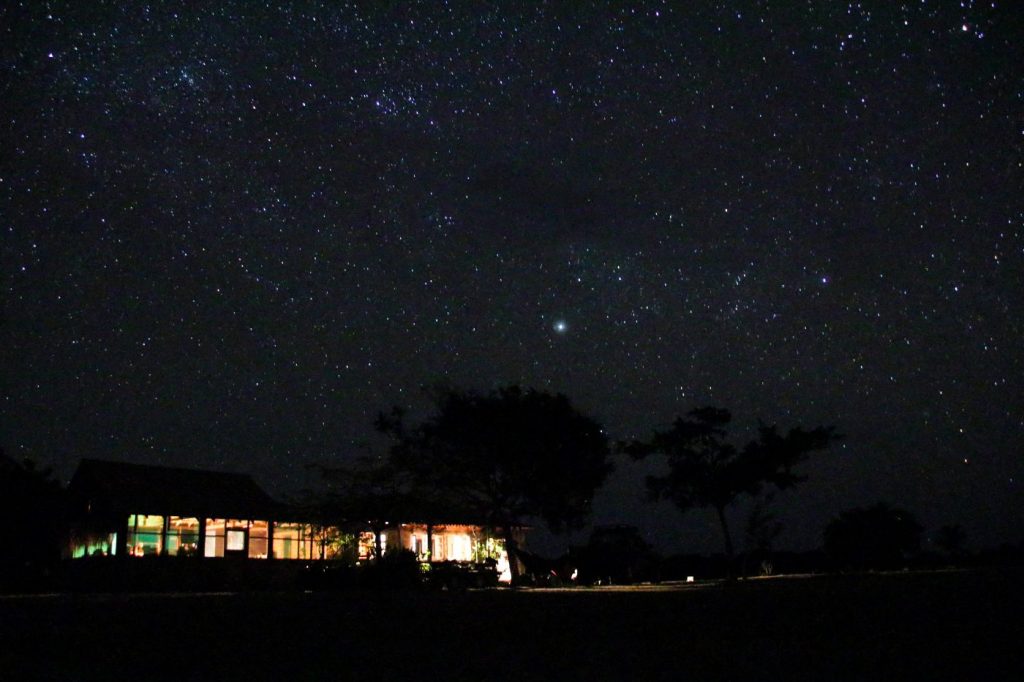
Remember, never travel without travel insurance! And never overpay for travel insurance!
I use HeyMondo. You get INSTANT quotes. Super cheap, they actually pay out, AND they cover almost everywhere, where most insurance companies don't (even places like Central African Republic etc!). You can sign-up here. PS You even get 5% off if you use MY LINK! You can even sign up if you're already overseas and traveling, pretty cool.
Also, if you want to start a blog...I CAN HELP YOU!
Also, if you want to start a blog, and start to change your life, I'd love to help you! Email me on johnny@onestep4ward.com. In the meantime, check out my super easy blog post on how to start a travel blog in under 30 minutes, here! And if you just want to get cracking, use BlueHost at a discount, through me.
Also, (if you're like me, and awful with tech-stuff) email me and my team can get a blog up and running for you, designed and everything, for $699 - email johnny@onestep4ward.com to get started.
Do you work remotely? Are you a digital nomad/blogger etc? You need to be insured too.
I use SafetyWing for my digital nomad insurance. It covers me while I live overseas. It's just $10 a week, and it's amazing! No upfront fees, you just pay week by week, and you can sign up just for a week if you want, then switch it off and on whenever. You can read my review here, and you can sign-up here!





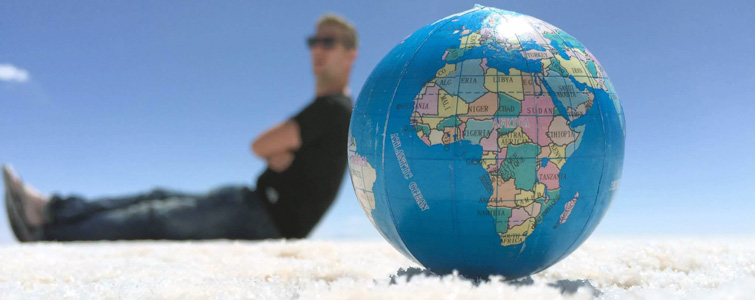

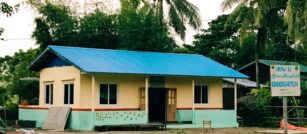
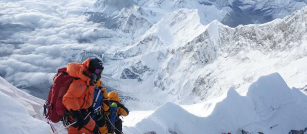
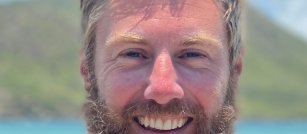
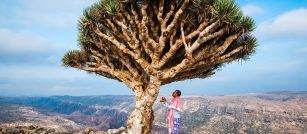
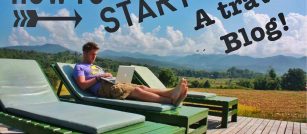
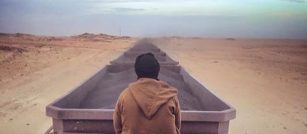
 As you know, blogging changed my life. I left Ireland broke, with no plan, with just a one-way ticket to Thailand
and no money. Since then, I started a blog, then a digital media company, I've made
more than $1,500,000 USD, bought 4 properties and visited (almost) every country in the world. And I did it all from my laptop as I
travel the world and live my dream. I talk about how I did it, and how you can do it too, in my COMPLETELY FREE
Ebook, all 20,000
words or so. Just finish the process by putting in your email below and I'll mail it right out to you immediately. No spam ever too, I promise!
As you know, blogging changed my life. I left Ireland broke, with no plan, with just a one-way ticket to Thailand
and no money. Since then, I started a blog, then a digital media company, I've made
more than $1,500,000 USD, bought 4 properties and visited (almost) every country in the world. And I did it all from my laptop as I
travel the world and live my dream. I talk about how I did it, and how you can do it too, in my COMPLETELY FREE
Ebook, all 20,000
words or so. Just finish the process by putting in your email below and I'll mail it right out to you immediately. No spam ever too, I promise!
